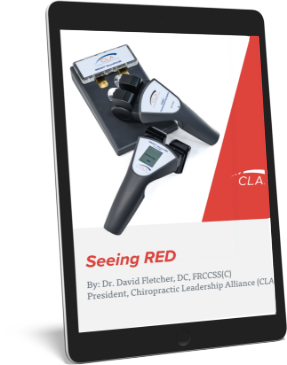By Dr. Christopher Kent and Dr. Patrick Gentempo, Jr.
The Michigan Board of Chiropractic and the Texas Board of Chiropractic Examiners recently have ruled that surface electrode paraspinal EMG scanning is within the scope of chiropractic practice. These rulings should serve as models for states where the scope of practice issue has been raised by insurance companies.
Section 16423 of the Michigan Public Health Code provides for the use of analytical instruments “for the purpose of locating spinal subluxations or misaligned vertebrae of the human spine.” Administrative Rule 338.12001 establishes criteria for board review of a request for approval of an analytical instrument. To be considered for approval, “The purpose of the instrument is to monitor the body’s physiology for the purpose of determining subluxated or misaligned vertebrae or related bones and tissues.”
The Michigan Board of Chiropractic reviewed information provided by boardapproved schools and colleges as well as manufacturers of EMG equipment. The order issued by the board states in part, “It is hereby found that scanning surface EMG, which does not use electrical potential to evoke a muscle response, is a noninvasive analytical, diagnostic instrument within the scope of chiropractic under the Public Health Code, as provided in the Board’s rules, and consistent with the Michigan Supreme Court decision in Attorney General vs. Beno.”
The board further stated that six hours of training approved by the board must be completed by a chiropractor prior to using the procedure. Since the issuance of this order, several organizations have offered certification programs.
The Texas Board of Chiropractic Examiners issued a statement that surface electrode electromyography is among those procedures which are “usual, reasonable and customary methods for diagnosing, documenting and analyzing the human frame and the condition of the human frame,” and “within the scope of practice of Texas chiropractors.”
The Texas Chiropractic Association has established a Diagnostic Scientific Council which has promulgated guidelines for the use of various examination procedures in chiropractic practice. One such technique was paraspinal EMG scanning. The council includes practicing chiropractors who use the technique in clinical practice. They have compiled a library of scientific and popular literature relating to the technique, and issued guidelines for determining clinical necessity for such studies.
The utilization guidelines established by the council include the following indications for surface electrode EMG. It is noted that indications are not limited to those listed:
1. Abnormal range of motion of a joint
2. Cumulative or repetitive trauma disorder
3. Loss of strength
4. Muscle spasm
5. Musculoskeletal injury
6. Musculoskeletal pain syndromes
7. Positive thermograms
8. Postural problems
9. Radiculitis
10. Scoliosis
11. Spinal injury
12. TMJ dysfunction
13. Tender joints
14. Weakness
15. Whiplash type injuries
16. Suspected malingering
17. Impairment ratings
The guidelines further state that, “It is considered standard protocol to perform up to three full spine surface electrode EMG studies and two regional studies during the course of treatment. The first full spine study is performed within close proximity to the time of initial treatment, a second one to monitor progress three to six weeks after the initial one and a final one near the time of discharge or after patient has reached maximum improvement. The aforementioned assumes that there has been no acute flareup, substantial change in symptoms, reinjury or any clinical observation or testing that warrants earlier investigation.”
Insurers need to be educated concerning the utilization of this technology in chiropractic practice. The people best qualified to provide this information are practitioners who use EMG scanning in clinical practice, not “armchair researchers” or “insurance prostitutes” with no training or experience in the technique. The examples set by the forward thinking chiropractors of Michigan and Texas are appropriate policies to be considered by other states.
References
- State of Michigan, Department of Licensing and Regulation, Board of Chiropractic. Order of Approval Number 19902AI.
- Letter to Charles H. Argubright, D.C., from Texas Board of Chiropractic Examiners, signed by James E. Franklin, D.C., President of the Texas Board of Chiropractic Examiners.
- Argubright CH: Utilization Guidelines. Diagnostic Scientific Council. Texas Chiropractic Association.




























































